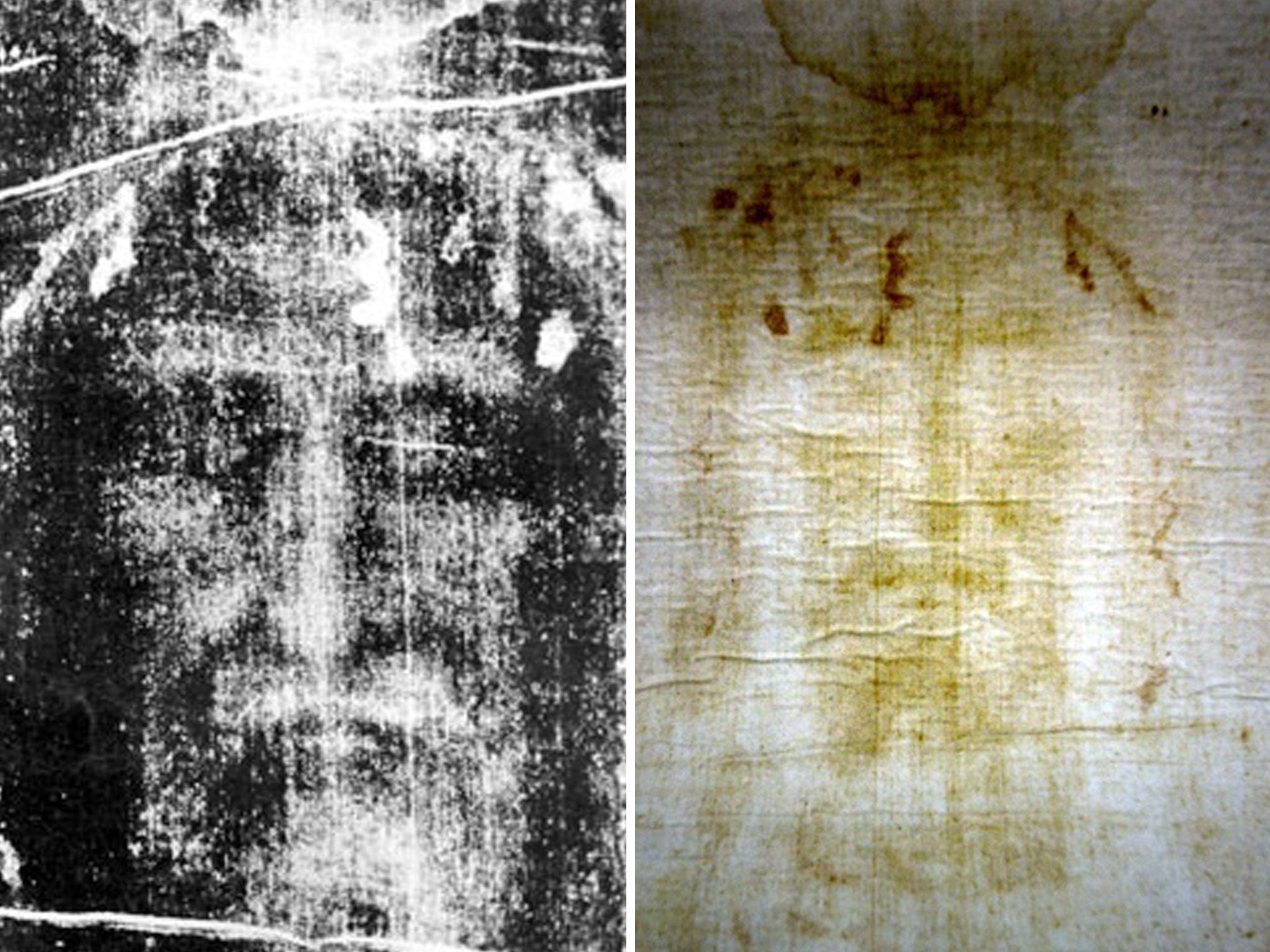Shroud of Turin goes back on display in Italian city's Cathedral, but does it show the face of Jesus Christ, or is it a medieval hoax?
Some Christians believe the material is the burial cloth of Jesus Christ, and that the depiction of his face is a miracle

The Shroud of Turin, a 4.4 metre-long piece of cloth that many Christians believe was used to shroud Jesus’s face and body, will go back on display on Sunday in the Italian city’s cathedral.
The cloth, which appears to show the imprint of a man’s face and the body markings that would match those of a person who was crucified, will be on display for the first time in five years from 19 April to 24 June.
It is mandatory to make a reservation in order to see the famous relic, but the viewings are free. The shroud will be displayed in a climate-controlled case in the cathedral.
Turin’s mayor said more than a million people had made reservations to see the cloth, while Pope Francis has booked to see the shroud on 21 June on an overnight trip to the Turin area.
Pope Francis gives life advice: in pictures
Show all 10When the cloth was last on display in 2010 some 2.5 million people came to see it, according to organisers.
The story of cloth itself has been shrouded in mystery for centuries, with some Christians believing the marks of dried blood match where Jesus’s hands and feet would have bled from his crucifixion wounds. It has also been said the dried blood around the head area of the cloth, where the markings of a man’s face appear to be shown, are from Jesus’s crown of thorns.
Scientists in Italy a year ago claimed that a powerful magnitude 8.2 earthquake that took place in Jerusalem in 33 AD – the year Jesus is claimed to have been crucified - could have been strong enough to release neutron particles from crushed rock and caused the X-ray like image of the bearer’s face to be imprinted on the cloth, leaving it with the appearance seen today.
The scientists have said this radiation would have interfered with the carbon-dating process carried out in 1988, which claimed the shroud had been created in the 1300s and was the result of an elaborate medieval forgery – the theory that most sceptics stand by.
Ten years later the former Cardinal Archbishop of Turin called the carbon-dating findings the result of an “overseas Masonic plot” that was created simply to discredit the Roman Catholic Church.
More than a decade later still another set of scientists appeared to have debunked the forgery claim, replacing the theory with their own that the creation of the image on the cloth was “supernatural”.
The scientist’s report stated a “short and intense burst of UV directional radiation colour linen cloth so as to reproduce many of the peculiar characteristics of the body image on the Shroud of Turin,” but that “this degree of power cannot be reproduce by any normal UV source built to date”.
Pope Francis’s predecessor, Benedict XVI, had described the cloth as an icon “written with the blood” of a crucified man. Benedict said there was “full correspondence with what the Gospels tell us of Jesus.”
But when Pope John Paul II had seen the shroud in 1998, he said the mystery forces questions about faith and sciences and whether it really was Jesus' burial linen. He urged continuous study.
Today, Turin cathedral’s Archbishop Cesare Nosiglia said people of all faiths will arrive to see the shroud for themselves, not just Christians, and “even non-believers”.
“Many pilgrims who had already seen the shroud in past showings come back, even though some saw it just five years ago.
“That's not a long time. And yet many of the bookings we have are people who have already seen the shroud. That means there is a fundamental need in people's hearts to renew this incredible experience that they had the first time they saw it,” the prelate told reporters.
“Even non-believers will come. It’s an occasion that brings everybody together and aims to give a precise response to the violence in this world. It tells us that the way to build a fairer world is not violence, but love,” he said.
Additional reporting by AP
Subscribe to Independent Premium to bookmark this article
Want to bookmark your favourite articles and stories to read or reference later? Start your Independent Premium subscription today.

Join our commenting forum
Join thought-provoking conversations, follow other Independent readers and see their replies